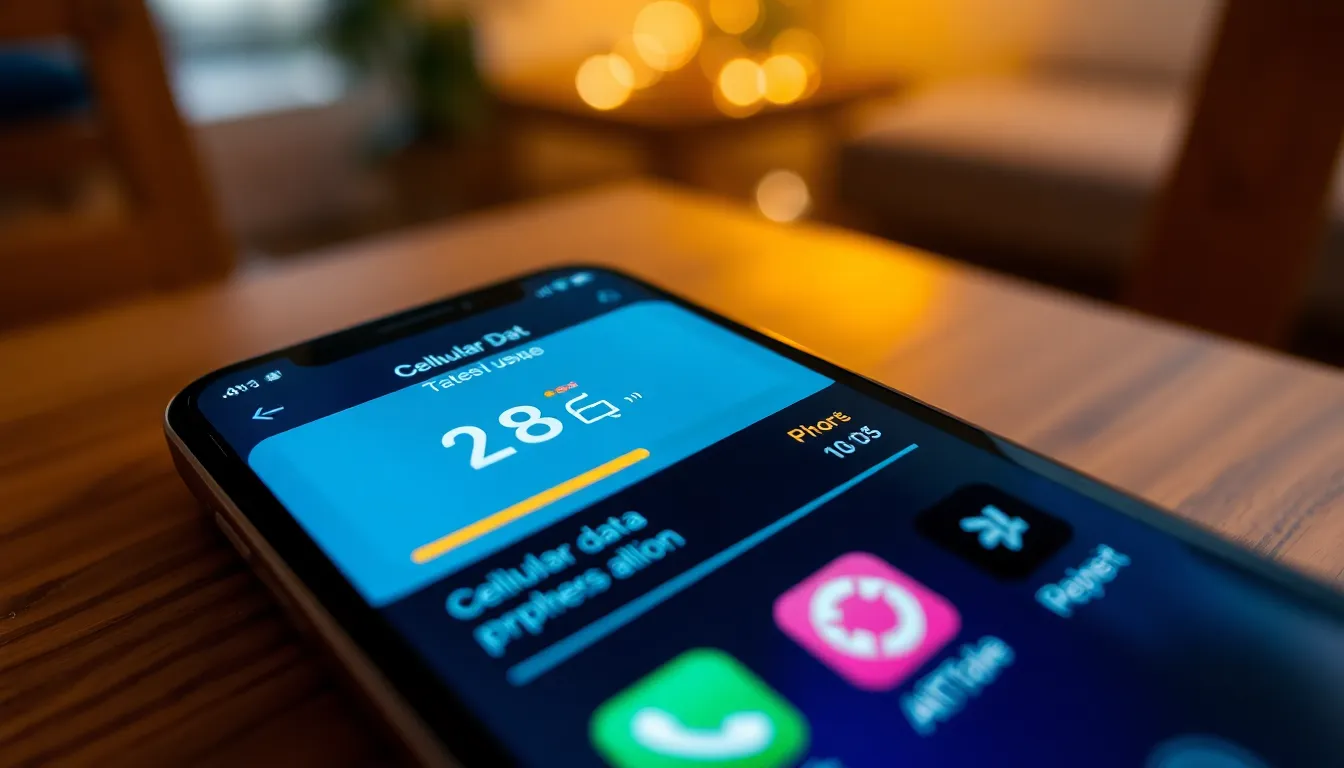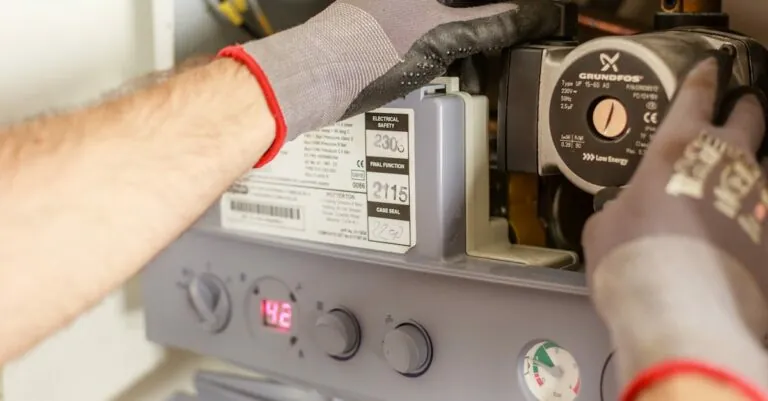Ever felt like your iPhone’s data usage is a sneaky ninja? One minute you’re scrolling through cat memes, and the next, you’re hit with that dreaded “data limit exceeded” notification. It’s like a surprise party you never wanted! Understanding how much data has been used this month can save you from unexpected overage charges and help you manage your online habits.
Table of Contents
ToggleUnderstanding Data Usage on iPhone
Monitoring data usage on an iPhone proves essential for effective cellular management. Users can track how much data apps consume, making informed decisions on their usage.
What Is Data Usage?
Data usage refers to the amount of information transmitted over a network. This includes browsing the internet, streaming videos, and using social media apps. Every online activity contributes to overall data consumption, impacting monthly allowances. Mobile carriers typically set limits, making it crucial for users to know their data usage for budgeting. Understanding data usage patterns helps users identify which applications consume the most data, allowing appropriate adjustments.
Why Tracking Data Usage Matters
Tracking data usage helps avoid unexpected overage charges. Without monitoring, users risk exceeding their data limits, leading to extra costs. It aids in assessing which apps consume more data, ensuring more responsible digital habits. By regularly checking data statistics, users can adjust their online activities to stay within limits. Understanding trends in data consumption allows for better planning and resource allocation, ultimately enhancing the overall user experience on an iPhone.
Checking Your Data Usage on iPhone

Monitoring data use on an iPhone provides users with insights into their online habits. Users can identify data consumption patterns effectively through built-in settings and third-party applications.
Using the Settings App
Accessing data usage statistics is simple with the Settings app. Open the app, select “Cellular,” and scroll down to view data usage for individual apps. Users can see how much data has been consumed in the current month. Resetting statistics at the start of each billing cycle allows for accurate tracking. Setting a reminder to check this data regularly ensures users stay informed about their consumption habits. Adjusting limits based on this information helps prevent overage charges.
Using Third-Party Applications
Exploring third-party applications presents additional ways to track data usage. Numerous apps provide detailed insights into data consumption across multiple devices. Users can set alerts for when they approach their data limits. Some applications offer breakdowns by day or week, providing a clearer picture of consumption trends. Familiarizing oneself with app features ensures users select the right one for their needs. Gathering this information enhances control over data usage.
Analyzing Your Monthly Data Usage
Tracking data usage is crucial for managing cellular expenses. Users can observe patterns and identify areas for improvement through careful analysis.
Understanding Data Metrics
Data metrics provide insight into mobile data consumption. Users can find metrics such as total data used, daily averages, and specific app usage through the iPhone Settings. Detailed figures reveal how much data apps consume during various activities. For example, streaming video may use significantly more data than browsing social media. Understanding these specifics can help individuals identify which apps consume excessive amounts of data, allowing for informed decisions about usage.
Tips for Interpreting the Data
Interpreting data usage statistics involves recognizing trends and setting personal limits. Users should compare monthly data consumption to allotted limits and evaluate usage frequencies. Adjusting app settings to reduce data consumption represents a smart strategy, such as enabling low data mode or restricting background app refresh. Establishing alerts within third-party apps can offer prompts when nearing data limits, ensuring users maintain control over their digital habits. Focusing on these methods enhances understanding and enables smarter data management.
Managing Data Usage on Your iPhone
Managing data usage effectively enhances an iPhone experience. Users can adopt various strategies to maintain control over their cellular data.
Setting Data Limits
Setting data limits empowers users to manage usage proactively. iPhone provides a way to create alerts when nearing data thresholds. Users can head to Settings, select Cellular, and then navigate to Cellular Data Options. Here, they can establish monthly thresholds to receive practical notifications. Monitoring usage in real-time helps refine habits and avoid overage charges. Users can also find peace in knowing when to limit activities that typically consume more data. Achieving this awareness starts with knowing one’s limits and adhering to them.
Recommendations for Reducing Data Usage
Reducing data usage involves several practical steps. Enabling Low Data Mode acts as a powerful tool, minimizing background activity. Users should also consider disabling automatic app updates while on cellular networks. Adjusting video streaming quality can further lower data consumption. Engaging in offline mode for music or video applications can help save significant data. Users can disable background app refresh for apps that don’t require constant updates. Finally, making it a habit to regularly check data metrics fosters ongoing awareness, ensuring users maintain optimal usage.
Managing data usage on an iPhone isn’t just about avoiding overage charges; it’s about enhancing the overall user experience. By regularly monitoring data statistics and understanding app consumption patterns, users can make informed decisions that align with their needs. Implementing proactive strategies like setting data limits and utilizing Low Data Mode can significantly contribute to better data management.
Staying aware of data usage not only helps in avoiding unexpected costs but also encourages responsible digital habits. Embracing these practices ensures that users can enjoy their online activities without the stress of exceeding their data limits. With the right tools and awareness, anyone can take control of their data usage and optimize their iPhone experience.





